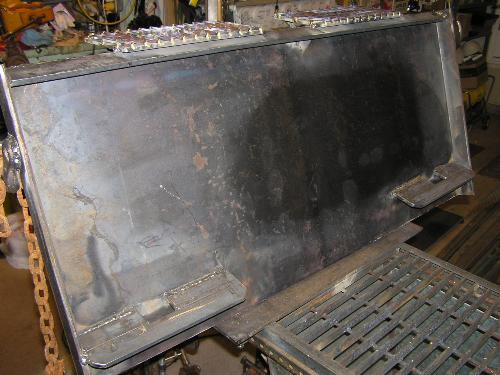Jim --- My only data points are a 1995 751C Bobcat and a 743 Bobcat (year unknown, probably about 1993 or so). Both have the same pin arrangement, with the center of the pins right at 5 1/4 inches in from either edge of the attachment plate. When I build an attachment plate, I make the lower flange plates with holes starting at 4 1/4 inches in from the edges, 2 1/2 inches wide, and stopping at 6 3/4 inches in from the edges. The large attachment plate is about 44 5/8 inch wide, and the slop comes out to about a quarter of an inch sied-to-side when put it on my Bobcat. The hole size above seems to accommodate the pins OK, wherever the attachment ends up on the Bobcat. I could probably make the attachment 44 1/2 inches wide, but I'd sure hate to find I'd made one that was too narrow to fit on the next guy's skid steer, so I just put up with the 1/4 inch slop and leave the lower flange plate holes large enough to handle it. By the way, I make the plates with the holes in them by using three pieces of steel stock, each from 1/4 inch thick by 1 1/2 inch wide strap. One piece is 12 inches long, one is 4 1/4 inches long, and the other is 5 1/4 inches long. Weld them together and I end up with a hole right where it needs to be. I hang the large plate on the Bobcat, then (after disconnecting the battery, don't wanna blow out the BICS computer!) tack weld the flanges with holes in place so as to get the right angle to match the Bobcat quick-tach. Measuring angles and distances to get the flanges/holes correct is a bit beyond me, but the method above so far takes no thought and works perfectly every time with a nice tight fit. In some cases, I've had to position the flanges/holes out about a 1/16 inch from the backing plate to ensure the pins don't bind. Also, I found if I added the flanges/holes as I described above, then did more welding on the large plate, it would warp just a bit. Then the top parts of the quick-tach plates on the Bobcat would no longer nest well inside the upper flange on the attachment plate, and I had to remove some metal on the bottom flange/hole plates so the pins would not bind. Hope this makes sense. --- Bob

.jpg)
.jpg)
